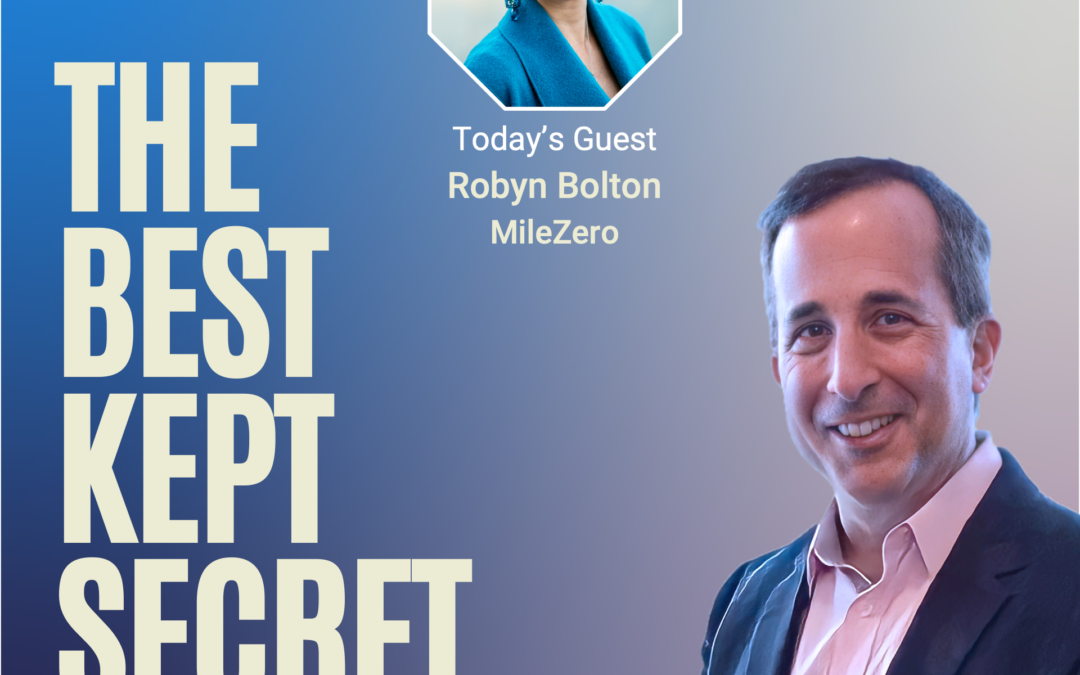
by Robyn Bolton | Feb 13, 2022 | Innovation, Just for Fun, Leadership, Tips, Tricks, & Tools
Before setting off on a journey to strange lands, most travelers take time to learn an essential phrase or two in the native tongue. After all, the ability to say “Hello” or “Help” or “Where’s the bathroom?” in the local language can mean the difference between a trip you remember forever and one that you want to forget immediately.
The same is true for people in large companies who set off on a quest to innovate – you’re in a strange land, and having a few handy phrases at the tip of your tongue can mean the difference between success and failure.
Here are the four most important phrases you should know as a corporate innovator
What does success look like?
Ask this at the beginning of every innovation effort. If you don’t, it’s very likely that what you view as success and what decision-makers view as success will be two different things.
Staffing up a new innovation team? What does success look like?
Starting a new project? What does success look like?
Developing and testing a prototype? What does success look like?
And don’t accept a vague or even qualitative answer to the question, like “we’ll know it when we see it” or “better employee engagement.” You need to know precisely what an effort contributes to and how leaders will evaluate the effort. Otherwise, it’s easy for managers to “move the goalposts” right when you think you’re about to score.
We expect a new innovation team to hold five brainstorming sessions and test 3 new products this year
We need this project to generate $10M revenue in 3 years from today
We need to understand how consumers will use this if we don’t give them any directions
Will you help me?
This question is perhaps the most challenging but most potent phrase in the innovation-to-corporate dictionary.
By the very nature of your work – making something new that creates value – you’re doing something that doesn’t fit cleanly into the existing structure. While that can be liberating, it also means that there are few, if any, people obligated to give you advice, resources, or support. That’s where this phrase comes in.
We all love to feel important and valued, and nothing makes people feel more important or valued than being asked for help. Plus, when you ask for help, people feel like they’re contributing to what you’re doing and start to feel a bit of ownership (or at least fondness) for it. Soon, you not only have advisors, but you also have partners, advocates, and champions.
Tell me more
This phrase is the ultimate innovation jiu-jitsu phrase because it turns your opponents’ strength (of opinion) against them and gives you powerful insights.
That will never work. Intriguing, tell me more.
We tried it, and it failed; the same thing will happen this time. I didn’t know that, tell me more.
If you do that, you’ll be fired. We don’t want that, so tell me more about why that would result.
Sometimes the rationale behind powerfully delivered dogmatic statements is logical and valid. Often, it’s emotional. The person who said it would never work is afraid that, if it does, their job will be in jeopardy. The person who remembers when it was tried before still bears the scars of that attempt and wants to protect you from the same experience. The person who says you’ll be fired for doing something may think that the rules are stricter than they are, and they’re trying to help you.
This phrase helps you figure out the reason behind the statement, the Why behind the What, so you can figure out what is true versus believed and how to get to your desired outcome.
What do you need to see to say “Yes”?
This question is my personal favorite, taught to me by a good friend, career innovator, and successful entrepreneur.
It is easy to say “No” and, in fact, that is the purpose of many people in a large organization.
Legal says No to keep the company o the right side of the law and out of lawsuits.
Accounting says No to keep the company financially healthy
Your boss says no because you have more work than you can handle, and this doesn’t seem essential.
Sometimes “No” is the correct answer. But if you start there, you’ll never know if it is the right answer or just the first, easiest, or most instinctual answer.
So, once you hear “No,” engage the person you’re talking to in a quick intellectual exercise and ask what they need to see to say “Yes.” By engaging them as an expert and your thought partner, you’re lowering their defenses and bringing them into a problem-solving mindset. Plus, you’re getting valuable insight into the type of data and evidence required to make progress.
What are other phrases every innovator should know?
As anyone who has ever tried to quickly learn a language for an extended trip, you’re best served by seeking out multiple sources.
After all, if I relied solely on Rosetta Stone to learn Danish before I moved to Copenhagen, I would have arrived knowing only how to say “the girl is on top of the airplane” (phonetically, it’s “pia pa flu-va-ma-skine”) and not “Hello” or “Help” or “Where’s the bathroom?”
So what are the phrases you repeatedly use to navigate your corporate innovation journey?

by Robyn Bolton | Feb 6, 2022 | Innovation, Leadership, Strategy
You know that to deliver today’s business and achieve tomorrow’s goals, you need a portfolio of projects that improve your existing operations and a portfolio of innovation projects. You also know that to max out your odds of hitting tomorrow’s goals, you need a portfolio of different types of innovation projects.
You are also keenly aware that with limited resources, you can’t possibly fund every project.
So how do you make some of the most complex decisions that confront leaders?
Don’t fall into the trap of false choices.
It’s easy to feel like you need to decide between funding operations projects and innovation efforts. You don’t.
Projects that improve what you do today, like increasing efficiency and improving existing offerings, are fundamentally different than innovation projects that create something new. Trying to compare them is like trying to compare strawberries and broccoli – they’re fundamentally different, and people have strong feelings about both.
Do allocate resources to improvement AND innovation projects.
Most of your resources should go to improvement projects because there are what keep you in business and equal to (or ahead of) competitors. They’re also the lowest risk, so you can be confident of achieving your expected ROI.
Innovation projects are higher risk, and the number of resources they need is hard to predict, especially when they are in their earliest days or focused on something radically new and breakthrough.
Don’t give innovation projects all their resources at once.
Annual budgets make sense when you’re 99.9999% certain that the line item will be around for an entire year. But when you don’t know if a project will be around until next quarter, let alone next year, don’t give them all the resources upfront. Project teams will be tempted to front-load their spending and, if the project needs to end, it can be hard to quickly free up the resources to allocate them to a different project.
Do protect all innovation resources for an entire year.
Even if you have the excellent discipline to carve out an annual budget for innovation and dole it out in bite-sized chunks based on hitting key milestones, it can be hard to maintain that discipline. Over time, the funds allocated to innovation, but not specific projects, start to look like a piggy bank that you can “borrow” money from when your existing business needs to. And while your intentions may be good, borrowed money is never repaid and, as a result, isn’t available when it’s needed.
Don’t use the same criteria to evaluate every innovation project.
Every project needs a small initial investment – money and people to answer a question or explore a space to see if “there’s a there there.” But before allocating a single additional resource to an innovation project, you should be able to answer the following five questions:
- What is the problem we’re solving, and who has it?
- How can/will we solve this problem?
- Why should we solve this problem/create this solution (e.g., does this support our strategy and priorities or create a compelling and sustainable competitive advantage)?
- What results do we need/will we get?
- What is the next major milestone, and what is required to get there?
If these questions can’t be answered, more work needs to be done, or the effort must be canceled. But often, these questions can be answered, but additional resources aren’t allocated because they can’t be answered with the same depth, breadth, and certainty that later-stage innovation projects can.
Applying the same burden of proof to an early-stage project asking for $10,000 to conduct consumer research as you apply to a late-stage project asking for $10M to launch doesn’t protect you from making a mistake. It drains your innovation portfolio and “protects” you from growth.
Do evolve decision-making criteria as a project progresses and resource requests get bigger.
At every stage of its development, a project should be able to answer the five core questions above with increasing depth and greater confidence rooted in ever more concrete and quantifiable evidence.
For example, consider a project in the design phase (first draft of a solution) seeking a few thousand dollars to test a paper concept with customers. When asked, “What results do we need/will we get?” if the answer is “We believe we can generate $X revenue based on the following eight assumptions, all of which we find believable based on internal or external benchmarks.” If you agree, then give them the money.
When that same project reaches the De-Risk phase (in-market testing) and requests millions of dollars and dozens of people for launch, if the answer is the same, STOP everything immediately (and, honestly, it shouldn’t have gotten this far)! The answer in this phase should be a detailed P&L and NPV because you know more than you did back at Design, and you’re asking for more.
Resource allocation is complex, especially when you have limited resources and an abundance of very different but very attractive choices. But it can be easier with a bit of discipline and common sense.
What other tips and tricks do you use to make resources allocation decisions?

by Robyn Bolton | Jan 30, 2022 | Innovation, Leadership
After months of work, haggling, encouraging, and deep breathing, you finally have your innovation capability up and running.
Your innovation strategy clearly aligns with and supports the overall business strategy. Teams know the boundaries within which they can innovate, understand the results they need to deliver and access the people and tools they need to make progress. Your leadership team regularly engages with innovation teams, talks with customers, and shares progress and learnings with the whole organization.
Your work here is done.
Right?
Wrong.
It’s just beginning.
Building a lasting capability for sustainable and repeatable innovation is a marathon, not a sprint. And while what you achieved is genuinely momentous, it’s also the equivalent of signing up for a marathon, putting on your shoes, and walking out your front door.
In short, you’ve just started training.
Training for a marathon
Full disclosure, I have never run a marathon, and I never intend to. Many years ago, a group of friends decided to run a marathon, and I volunteered to be their Team Manager and handle all travel and game day logistics. Long story short, I missed one of our re-fueling points because I took a nap in the car. Yes, I can’t even drive a marathon without getting tired.
So, to make sure this analogy holds, I sought training advice for beginners from Runner’s World. Here’s what I learned:
- Training usually requires 16 to 20 weeks of running three to five times a week. That’s 48 to 100 training sessions to complete ONE marathon!
- Beginners should focus on finishing the marathon, not their time to complete it. Remember, the first person to run a marathon died. Living to tell your tale is winning.
- You will miss training sessions. If you don’t miss too many (4 weeks or more), you’ll be fine.
- Training is hard. The key is distinguishing “good pain” from “bad pain.”
- Strength training and conditioning are just as important as running is in your training program.
Training for lasting innovation
Full disclosure, I have done a lot of innovation as both an intrapreneur and a consultant. As a result, I can assure you that leaders of newly established innovation capabilities endure a training experience similar to marathoners’.
- Stabilizing your innovation capability to be “the way we do business” takes significantly longer than establishing it. You will have to engage, encourage, advocate, remind, steer, and communicate 48-100 times more now than you had to in the past.
- Organizations should focus on proving that they can successfully create, test, and launch a commercially viable innovation, not finding the next $1B idea. Remember, ideas are a dime a dozen, and the organization is burned out on innovation theater. Launching something that makes money proves that innovation is possible and that is winning.
- You will have failures. If you take the time to learn from them, to find the root cause, and make changes, so they don’t happen again, you’ll be fine.
- Innovation is hard because change and uncertainty are hard. The key is distinguishing “good pain” from bad pain. It’s called “growing pains,” not “growing tickles” for a reason.
- Managing and growing your core business is just as crucial as stabilizing and encouraging innovation. You need to see the whole picture to make the best decisions to reach your short-term AND long-term goals.
What’s your innovation training regimen?
Being a leader is like being a runner – it’s an identity.
Being a leader that supports and enables innovation is like being a marathoner – people think you’re crazy to endure the pain and discipline of training, but they will never know the high that comes from achieving a seemingly impossible goal.
What did I miss in the list above? What’s your innovation training regimen?




